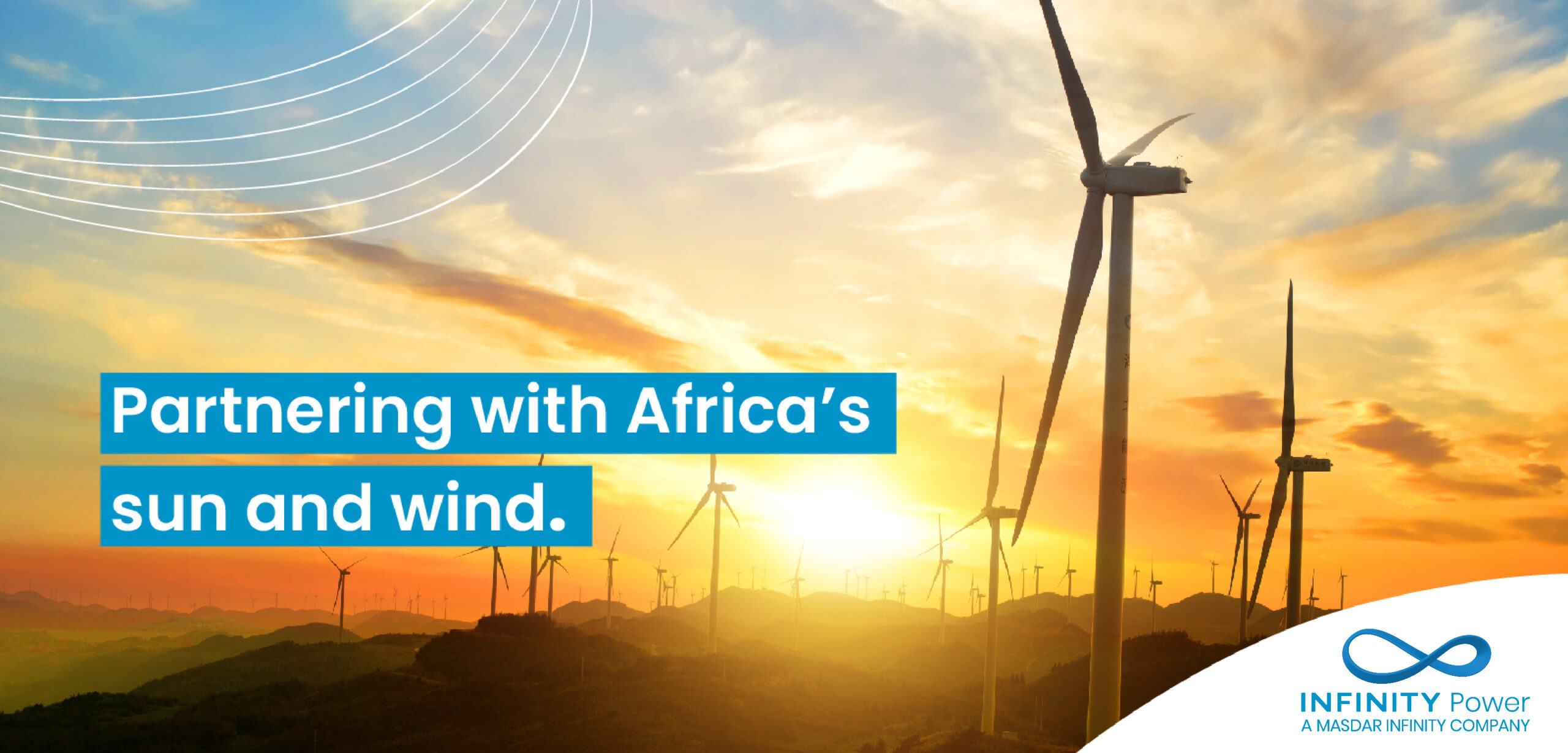- Adnoc Gas awards contract for major CCUS project. (Carbon Capture)
- Adnoc partners up with Fertiglobe for pilot deployment of world’s first cost-effective modular carbon capture unit. (Carbon Capture)
- Poland’s Green Capital Group eyes 8 GW green hydrogen project in Morocco. (Green Hydrogen)
- Kuwait plans to kick off tendering process for 4 GW Shagaya solar plant. (Solar)
- A Masdar + W Solar JV signed its first renewables in Tajikistan. (Renewables)
- OIH finalizes sale of Brazil subsidiaries to partially finance renewables projects. (M&A Watch)
- COP28 Presidency wants to put SMEs on track for net-zero. (Also on Our Radar)
- Ireland shows the world how a fossil-fuel phaseout is done. (Around the World)
- Egypt is on track to operate its first green hydrogen facility by 2026. (What We’re Tracking Today)
- UAE: Possible testing ground for climate's next big thing? (On Your Way Out)

Wednesday, 4 October 2023
Adnoc Gas awards contract for CCUS project
TL;DR
WHAT WE’RE TRACKING TODAY
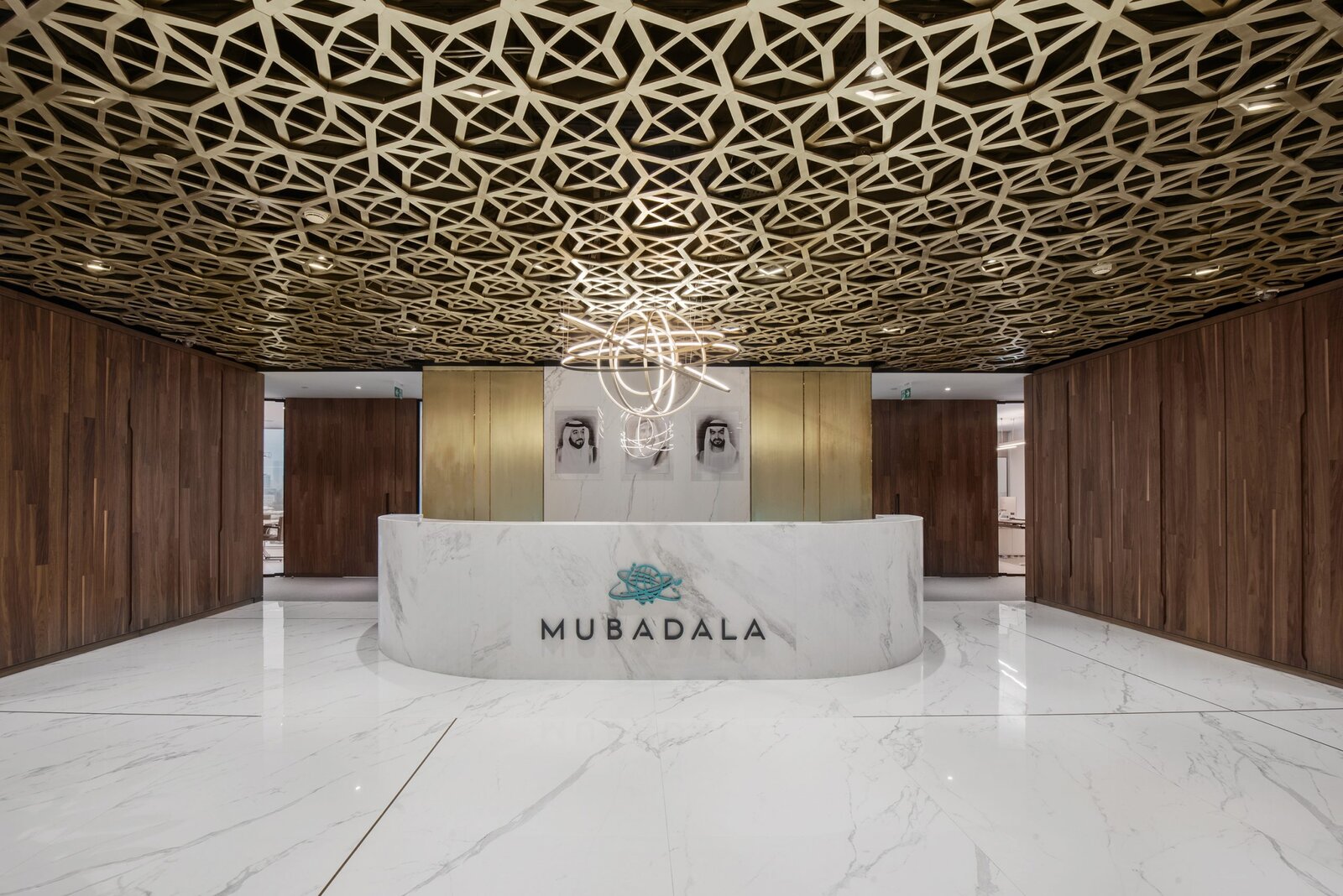
Good morning, ladies and gentlemen. Once again, we’re looking at a busy morning for climate in our neck of the woods, with carbon capture emerging as a big theme of the day.
THE BIG CLIMATE STORIES- Adnoc Gas has awarded a USD 615 mn engineering, procurement, and construction contract to Petrofac Emirates to build carbon capture infrastructure at the Habshan gas processing plant. Meanwhile, Adnoc has struck a partnership with Fertiglobe — a joint venture between Adnoc and OCI Global — for the pilot deployment of the world’s first cost-effective modular carbon capture unit by UK-based Carbon Clean.
THE BIG CLIMATE STORY OUTSIDE THE REGION- There’s no single climate story grabbing the headlines this morning, but the European Parliament’s environment committee refused yesterday to approve two nominees aiming to head Europe’s climate agenda, Reuters reports. Both former Dutch Foreign Minister Wopke Hoekstra, the nominee for the EU’s upcoming chief of climate change policy, and Maros Sefcovic, the proposed EU green policies chief, failed to earn the green light from the committee during the hours-long hearings. They will now have to submit answers to extra questions asked by lawmakers today, who will then decide on whether to approve their new roles. Some of the lawmakers have said that both officials were unclear on how they would implement the bloc’s new green policies.
Mubadala names bank lineup to present its green finance plan to investors: Emirati sovereign wealth fund Mubadala has tapped Abu Dhabi Commercial Bank, First Abu Dhabi Bank, HSBC, and ING to present the company’s new climate finance framework to investors at a meeting that starts today and runs until Friday, Reuters reports. Published last month, the blueprint outlines Mubadala’s framework for providing green finance instruments like bonds, sukuk, loans, and medium-term notes.
WATCH THIS SPACE #1- Some good news on Egypt’s green hydrogen front: Egypt will operate its first green hydrogen facility in 2026, an Electricity Ministry source told Enterprise Climate, without specifying which facility. Trial stages at the unidentified facility are set to begin in mid-2025, our source said, expecting the upcoming period to see further investments in green hydrogen in the country. Egypt is working on having “competitive” green hydrogen pricing to help lure in potential investors, he added.
Aiming big: Egypt aims to produce up to 1.5 mn tons of green hydrogen per year by 2030 through 19 GW of generated energy from solar and wind projects, Youm7 reported on Tuesday, citing a source at the New and Renewable Energy Authority (NREA). The country aims to raise production to 5.8 mn tons by 2040 from 72 GW of generated renewable energy. This would allow for exporting 3.8 mn tons, which accounts for 5% of the global green hydrogen market, according to the source.
REMEMBER- Egypt is experiencing a green hydrogen bonanza: The Egyptian government signed several framework agreements during COP27 with foreign companies to construct several green hydrogen and ammonia facilities in the SCZone. The facilities would cost a combined USD 83 bn and collectively produce up to 7.6 mn tons of green ammonia and 2.7 mn tons of hydrogen a year. Egypt also approved incentives in May to boost the country’s green hydrogen sector and lure in much-needed foreign exchange inflows.
WATCH THIS SPACE #2- An Occidental DAC replica in Oman? US-based energy company Occidental is examining the possibility of setting up a direct air capture (DAC) project in Oman, Zawya reported on Tuesday, citing statements by Occidental’s President and CEO Vicki Hollub during Adipec in Abu Dhabi. The company has submitted a replica of a working DAC project to Oman, Hollub said, adding that there has been “enthusiasm” about the proposal.
REMEMBER- Oman is luring some in: Omani developer of carbon mineralization tech 44.01 and DAC company Aircapture are working on a DAC and mineralization project in the sultanate. Oman continues to get touted for its potential to host large-scale carbon capture projects. “Oman could be well suited for the deployment of DAC technologies. This is because of its abundant solar resources to power the DAC plants and availability of water resources and peridotite formations – both needed for CO2 mineralization with the goal of carbon removal," a report (pdf) by the International Energy Agency said in June.
Occidental ♥️ the Gulf: In August, Adnoc and Occidental signed a strategic collaboration agreement to evaluate the development of DAC facilities in the UAE — including what could be the first megaton DAC project outside of the US — to potentially absorb as much as 1 mn tons of carbon dioxide annually. They agreed yesterday to conduct a joint preliminary engineering study for the construction of the facility. Adnoc will also explore the possibility of participating in several DAC and CO2 sequestration facilities that are currently being developed by Occidental’s subsidiary 1PointFive in the US.
WATCH THIS SPACE #3- Abu Dhabi’s largest PV project is coming online soon: Taqa, Masdar, France-based EDF Renewables, and China’s JinkoPower expect to inaugurate their 2 GW Al Dhafra solar park “soon,” Taqa CEO and Managing Director Jasim Thabet said at Adipec yesterday, according to the National. The consortium had installed the last of the farm’s 3.5 mn PV panels back in April.
Private sector has to fulfill bulk of climate financing needs, IMF says: The majority of the USD 2 tn in annual climate investments needed in developing countries by 2030 will have to come from the private sector to avoid high debt burdens, the International Monetary Fund (IMF) said in a blog post one week ahead of the fund’s annual meeting to take place in Marrakech, Morocco. The IMF warns that governments will risk high debts if they try to reach net-zero goals solely through public investments and renewables subsidies. Relying mostly on public spending measures will become increasingly costly — as interest rates and weaker growth become more likely — possibly raising debt by 45% to 50% of GDP by midcentury, according to the blog post, which pointed to a chapter (pdf) in its latest Fiscal Monitor for further insight on how countries can balance achieving climate goals, fiscal sustainability, and political feasibility.
The Middle East region’s planned hydrogen capacity has doubled y-o-y, with final investment decisions reached in a handful of large projects that are expected to lead the “race to start exports by 2030,” S&P Global reports. Currently, there are 83 renewable hydrogen or ammonia projects in the region that collectively produce 9 mn MT of hydrogen each year.
MENA is booked and busy when it comes to clean hydrogen projects: Japan and Korea plan to award subsidies to kickstart the clean fuels market at the end of 2024 and begin awarding contracts by 2025, with deals expected to begin in 2027. By 2030, clean hydrogen projects in the Middle East are expected to produce and export 18.15 mn MT of hydrogen, of which 1 mn MT will be primarily low-carbon or renewable. S&P Global Commodity Insights estimates that these projects will need roughly USD 50 bn in capital. Meanwhile, it forecasts that the Middle East will dominate all other regions in the field, with production projected at 28 mn MT of clean hydrogen, and exports at 6.28 mn MT, in 2040.
Saudi is topping the green hydrogen charts: The cost of producing hydrogen in Qatar and Saudi Arabia was examined and compared by Platts — a business that assesses prices and market information — which concluded that Saudi Arabia leads the green hydrogen cost race. 1 kg of hydrogen, produced using steam methane reforming and carbon capture, cost Qatar USD 1.84 in September, a 5.75% increase from the previous month. Meanwhile, it costs Saudi USD 3.22 to produce hydrogen using Alkaline electrolysis, including the initial cost of equipment, with expenses remaining roughly the same as it was the month before.
|
***
YOU’RE READING ENTERPRISE CLIMATE, the essential MENA publication for senior execs who care about the world’s most important industry. We’re out Monday through Thursday by 5am Cairo / 5am Riyadh / 6am UAE.
EXPLORE MORE OF ENTERPRISE ON THE WEB — tap or click here to read EnterpriseAM, EnterprisePM, and The Weekend Edition on our powerful new website packed with reader-friendly features.
Were you forwarded this email? Get your own subscription without charge here or reach out to us on climate@enterprisemea.com with comments, suggestions and story tips.
***
CIRCLE YOUR CALENDAR-
The Saudi Green Building Forum kicks off next week from Monday-Thursday, 9-12 October. The forum, hosted by the Saudi Municipal, Rural Affairs, and Housing Ministry, will focus on speeding up the construction industry's transition to carbon neutrality by promoting sustainable practices in energy, water use, and green cities.
MENA Climate Week is kicking off soon in KSA’s Riyadh Boulevard City: The UN-backed climate conference, hosted by Saudi’s energy ministry, will gather policy makers, the private sector and civil society organizations from across the MENA region to discuss climate barriers and solutions between 8-12 October. This is one of four region-specific climate weeks to take place after the UN’s global stocktake report and ahead of COP28 this December.
Check out our full calendar on the web for a comprehensive listing of upcoming news events, national holidays and news triggers.
CARBON CAPTURE
Adnoc Gas awards contract for major CCUS project

Adnoc Gas awards USD 615 mn contract for major carbon capture project: Adnoc Gas, Adnoc’s integrated gas processing company, has awarded a USD 615 mn engineering, procurement, and construction (EPC) contract to Petrofac Emirates to build carbon capture infrastructure at the Habshan gas processing plant in Abu Dhabi, the company said in a press release. Petrofac Emirates will construct carbon capture units, pipeline infrastructure, and a network of wells for CO2 injection at the plant. The project will be commissioned in 2026.
About the project: The Habshan carbon capture, utilization, and storage (CCUS) project will have the capacity to capture and store 1.5 MT of CO2 annually, which will be stored in deep geological formations underground in ADNOC Onshore’s Bab Far North Field, roughly 150 miles southwest of Abu Dhabi. Adnoc Gas will build, operate, and maintain the project, the release notes. Over 65% of the contract value will flow back into the UAE's economy through Adnoc’s In-Country Value (ICV) program, according to the press release.
What they said: “Integrated carbon capture projects, such as the Habshan CCUS project, are essential building blocks for Adnoc Gas to achieve its decarbonization goals,” Adnoc Gas CEO Ahmed Alebri said in the release. “Integrated carbon capture projects, such as the Habshan CCUS project, are essential building blocks for ADNOC Gas to achieve its decarbonization goals,” he added.
Adnoc is bullish on CCUS projects: Adnoc is building on its existing CCUS projects, which include the Al Reyadah carbon capture facility with the capacity to process up to 800k tons of CO2 per year captured at Emirates Steel Arkan. Adnoc also signed a strategic collaboration agreement with Occidental Petroleum in August to evaluate the development of direct air capture (DAC) facilities in the UAE that would have the capacity to capture 1 mn tons of CO2 annually.
In lock-step with Adnoc’s ISCC certification: Adnoc’s Ruwais Refinery has received International Sustainability Carbon Certification (ISCC) for the production of sustainable aviation fuel (SAF), Adnoc announced in a press release. The certification allows Adnoc, the first in the Middle East to earn the certification, to supply international airlines with its SAF at Abu Dhabi Airport. The first batch of the fuel will be available later this month, the release notes.
CARBON CAPTURE
Adnoc partners up with Fertiglobe for pilot deployment of world’s first cost-effective modular carbon capture unit
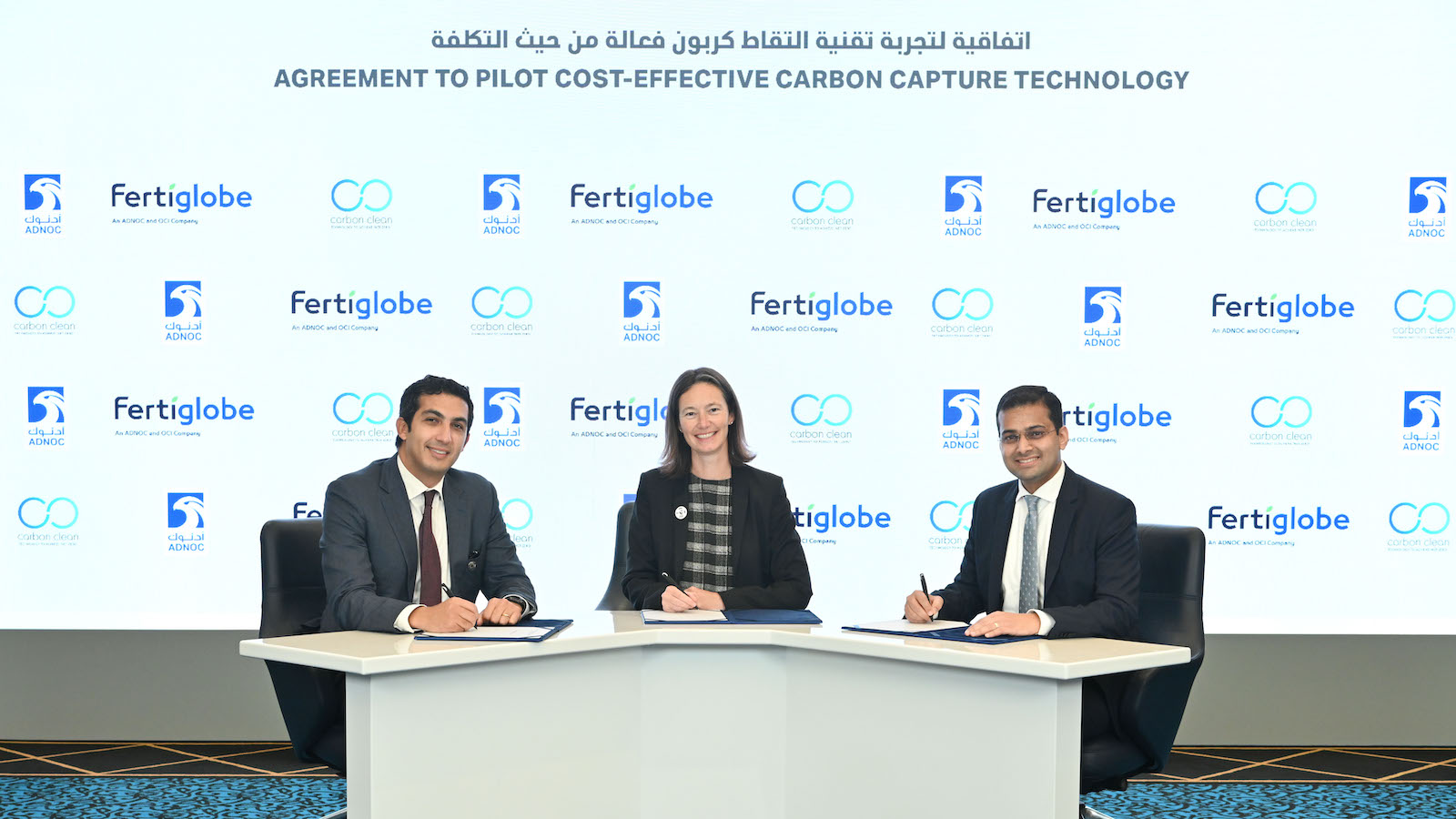
Another ambitious carbon capture venture by Adnoc: Abu Dhabi state oil giant Adnoc announced a strategic partnership with MENA fertilizers firm Fertiglobe — a joint venture between Adnoc and OCI Global — for the pilot deployment of the world’s first cost-effective modular carbon capture unit by UK-based Carbon Clean, Fertiglobe said in a statement (pdf) yesterday. The partnership will see the first deployment of a 10-ton-per-day CycloneCC industrial unit by Adnoc, a separate statement by Carbon Clean said.
What we know: The CycloneCC carbon capture unit, developed by Carbon Clean, will be installed at the Fertiglobe-owned nitrogen fertilizer plant in Abu Dhabi’s Al Ruwais Industrial Complex. The pilot deployment will commence in November, the statement said, with a successful piloting paving the way for the deployment of larger CycloneCC carbon capture units that are being manufactured in the UAE.
Why the tech matters: Conventional point source carbon technology is capital, time, and energy intensive due to a reliance on feeding gas through large absorption and stripping towers where solvent and heat are utilized to separate, capture, and compress carbon dioxide, according to the statement. In contrast, Carbon Clean’s CycloneCC unit utilizes rotating packed bed technology that allows for prefabricated modular carbon capture units that are half the size of traditional units.
What they said: “Across ADNOC, we are exploring every opportunity to decarbonize our operations and leverage technology and partnerships as part of our journey to Net Zero by 2045. Developing and deploying cost-effective carbon capture technologies is critical to achieving our annual target of 10 million tonnes of carbon capture, utilization and storage capacity by 2030,” Adnoc Chief Technology Officer Sophie Hildebrand said.
GREEN HYDROGEN
Poland’s Green Capital Group eyes 8 GW green hydrogen project in Morocco
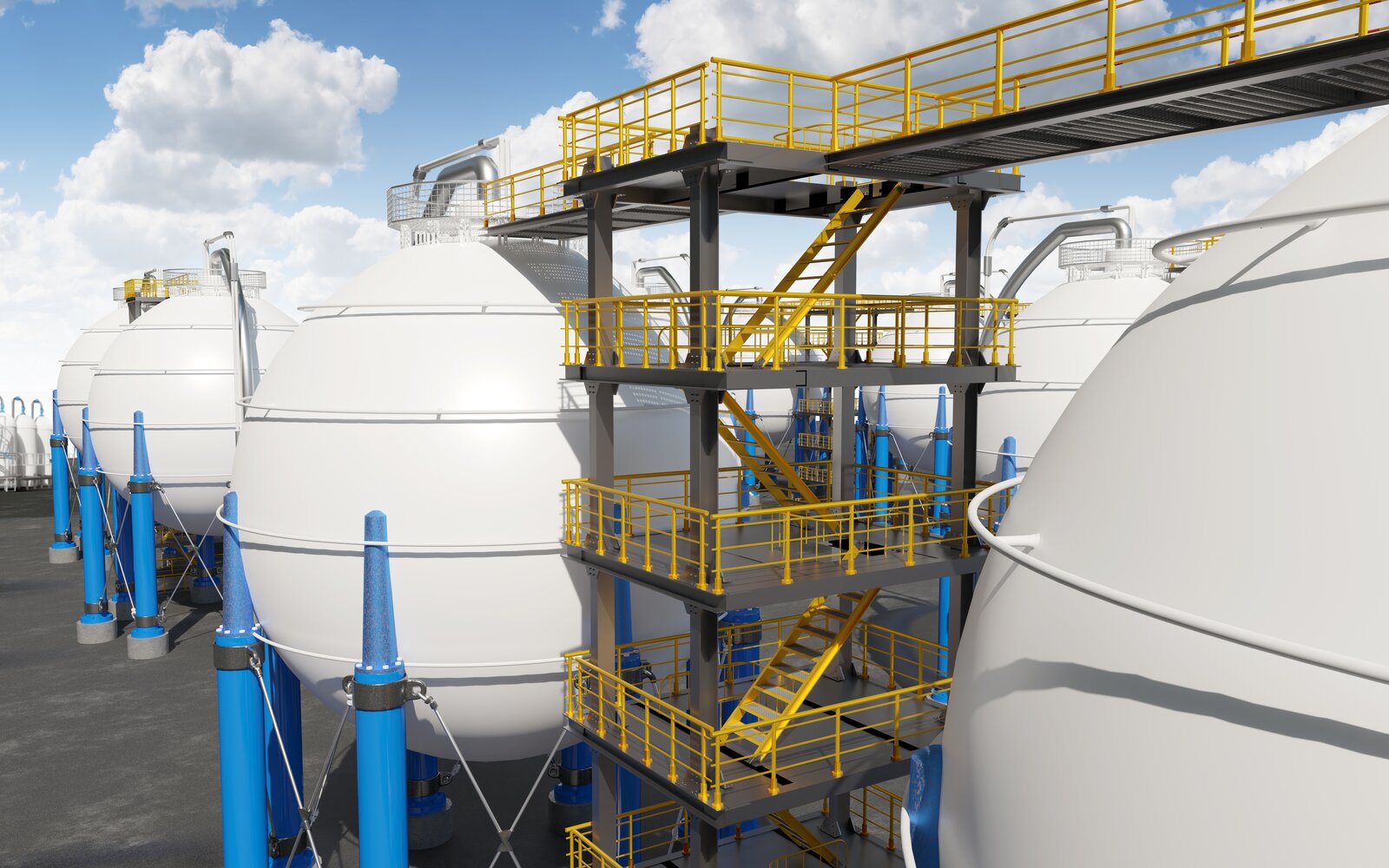
Another day, another green hydrogen project: Polish clean energy company Green Capital Group plans to set up an 8 GW green hydrogen project in southern Morocco’s Dakla in the next five years, Houssam Abou Otmane, the director of the company’s Moroccan subsidiary Houssam Abou Otmane told Moroccan outlet Le360.
Already getting things set: Green Capital Group has already identified the project’s location and is in the process of finalizing the necessary allocations for the project, Abou Otmane said.
And more: Green Capital is also seeking solar PV and wind power projects in Morocco, targeting Tangier, the Oriental region, and Marrakech-Safi, Taza, Fes, and Laayoune. “Green Capital is in the process of finalizing the feasibility studies on the ground in these different areas, before beginning the acquisition process and making authorization requests from the Ministry of Energy Transition. We plan to carry out these projects over the next five years,” he said.
REMEMBER- Morocco has been pushing ahead with efforts to position itself as a hub for renewable energy due to its major solar and wind resources. Renewables should account for 50-52% of Morocco’s energy mix by 2030, up from a current 38%, Moroccan Prime Minister Aziz Akhannouch said earlier this year. Its wind and solar resources have the potential to make the North African country one of the providers of the cheapest renewables in the world, Akhannouch said, and can be used to fuel the country’s green hydrogen ambitions.
And spending big: Morocco said in August that it plans to pour USD bns in new green hydrogen and ammonia projects as demand gains steam. Some 93% of the MAD 591 bn (c. USD 57.2 bn) of the 454 planned projects will focus on these sectors, according to the Moroccan Economy and Finance Ministry.
SOLAR
Kuwait plans to kick off tendering process for 4 GW Shagaya solar plant

Kuwait is set to issue a Request for Qualification (RFQ) for a planned USD 3.9 bn 4 GW solar power project in its Shagaya region by year-end, Zawya quotes an Electricity, Water, and Renewable Energy Ministry official as saying. The government plans to roll out the RFQs for the four phases of the project in succession, with the first phase set to be launched “in two to three months,” according to the official. The final RFQ will be launched by mid-2024.
The nitty gritty: The project will be divided into four phases: The first solar PV phase will have a capacity of 1.1k MWac, the second phase will be a 200 MW concentrated solar power (CSP) plant, the third phase will have a capacity of 1.5k MWac, and the fourth and final phase will be 1,700 MWac. The specific technologies for the third and fourth phases have yet to be determined.
Everything old is new again: The Shagaya project was initially announced 10 years ago and underwent multiple changes before being shelved due to the covid-19 pandemic. However, a pilot 70 MW project was launched in February 2019, featuring 50 MW of CSP, 10 MW of wind, and 10 MW of PV located in the Shagaya desert, 100 km west of Kuwait City.
RENEWABLES
A Masdar + W Solar JV signed its first renewables in Tajikistan
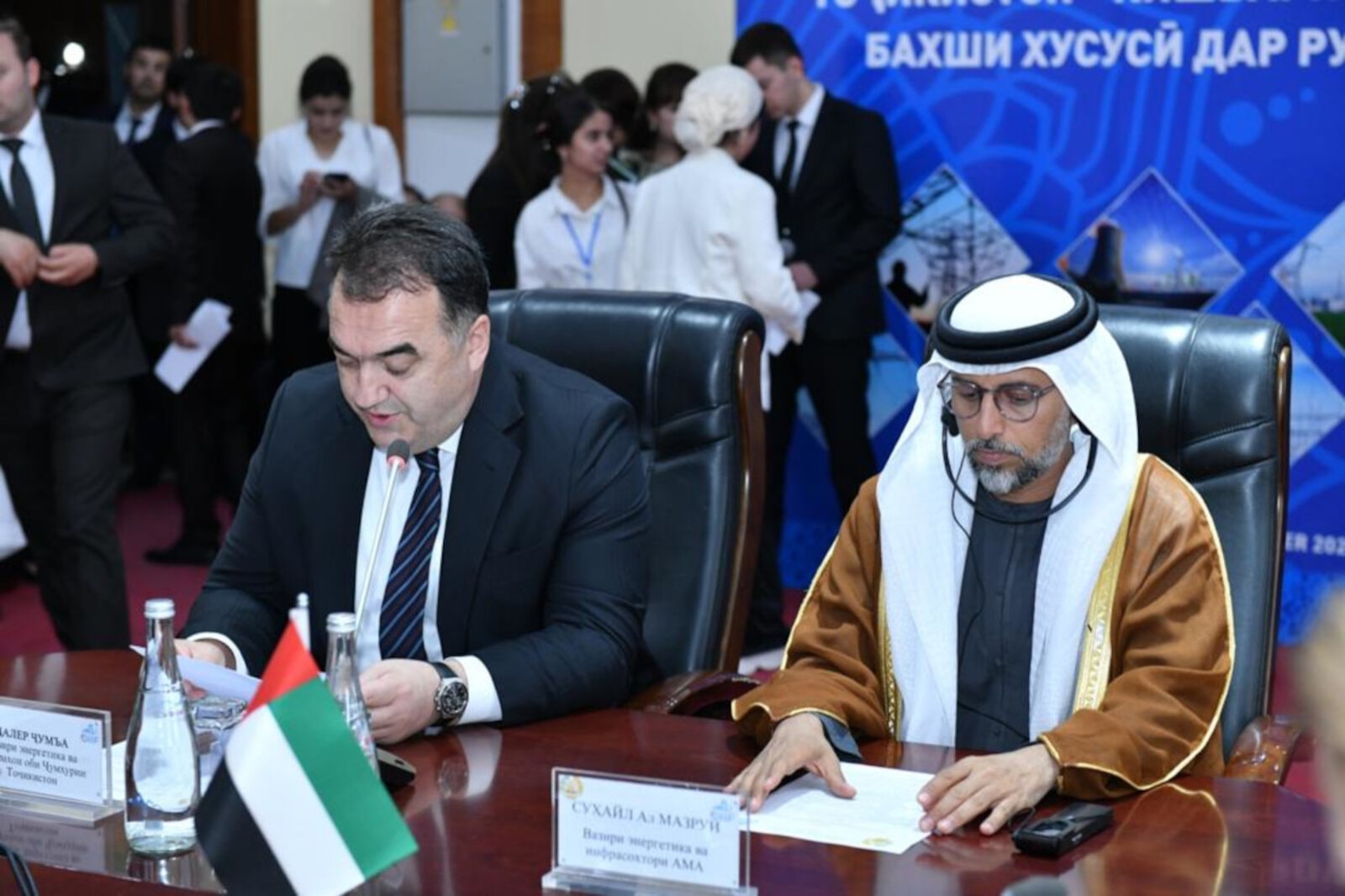
Masdar + Alpha Dhabi sign first agreement to explore green energy projects in Tajikistan: A JV between Masdar and Alpha Dhabi’s W Solar Investment — called MW Energy — has signed an MoU with Tajikistan’s Energy and Water Ministry to explore developing at least 500 MW of green energy projects, according to a Masdar statement. The first 500 MW represents phase 1, with further investments expected in the future, the statement said. The JV will explore (floating) solar power, wind, and hydropower projects under public private partnership models. The MoU was signed during the Dushanbe International Investment Forum. The project timeline and investment value were not disclosed.
Tajikistan has big hydropower potential: Despite the Central Asian country being landlocked, it still holds an abundance of freshwater resources, with 2% percent of its area covered by lakes and hundreds of rivers, according to the Aga Khan Development Network. Currently, over 95% of its electricity is supplied by hydropower.
And it’s planning to use it to build a green hydrogen sector: Tajikistan plans to capitalize on its estimated 527 TWh hydroelectric energy capacity as well as other renewable sources to produce up to 500k tonnes of green hydrogen annually by 2030, before doubling its planned generation volumes to 1 mn tonnes by 2040.
The country is going big on renewables too with major export goals in mind: Tajikistan aims to have 700 MW of solar and wind energy installed by 2030 — representing 10% of its energy mix — with 450 MW already under study, Tajikistan’s Energy and Water Minister Daler Jum’a said, according to the statement. The country hopes to export up to 75% of its low-carbon hydrogen to other Central Asian countries.
MENA banks are interested in investing in Tajikistan’s green transition: In August, the Islamic Development Bank (IsDB) signed a financing agreement with the government of Tajikistan to improve water management for the country’s agriculture sector. This came a few months after IsDB said it was earmarking USD 403 mn for three projects in Egypt, Kyrgyzstan, and Tajikistan to support sustainable energy and transport. Last month, the Opec Fund for International Development — of which Algeria, Iran, Iraq, Kuwait, Libya, Saudi Arabia, and the UAE are members — approved more than USD 150 mn in new financing for sustainable development projects in eight different countries, including Tajikistan.
REMEMBER- Masdar is making big investments in Tajikistan’s neighboring countries too: Masdar has developed the region’s largest wind farm — the 500 MW capacity Zarafshan plant in Uzbekistan, of which 4.7 MW are already installed. Masdar also reached financial close on three Uzbek solar projects in Jizzakh, Samarkand, and Sherabad, which have a combined capacity of around 900 MW — the largest in Central Asia — and has actively contributed to Uzbekistan’s first 100 MW IPP solar project Nur Navoi, operational since 2021. The company was also awarded the 250 MW Bukhara Solar PV project, which includes a 62 MW battery energy storage system, late last year. Masdar signed an agreement with Kyrgyzstan to develop clean energy projects with a total capacity of up to 1 GW, and another with Turkmenistan to build a 100 MW solar plant.
About W Solar Investment: W Solar invests, develops, owns, operates, and transfers renewable energy power plants through its subsidiaries. In January 2022, UAE’s biggest conglomerate Alpha Dhabi Holding acquired 75% of W Solar. Since then, W Solar has only signed one preliminary agreement to develop 2 GW of solar energy in Libya, according to a statement on the ADX (pdf) published in June 2022. Alpha Dhabi Holding has been acquiring companies active in the green transition. Last year, it bought 20% of International Energy Holding Company, and recently announced it is planning to acquire a majority stake in local water management provider Metito Holdings pending regulatory approvals. Abu Dhabi Developmental Holding Company (ADQ) owns the other 25% of W Solar.
About MW Energy: Masdar and W Solar formed MW Energy to carry out its clean energy projects outside the MENA region, with a focus on Africa and Central Asian countries including Kazakhstan, Tajikistan, and Turkmenistan. The JV already has an initial pipeline of projects with a total capacity of 8 GW. The new company was also formed to support the UAE’s Etihad 7 initiative, which aims to supply 100 mn Africans with 20 GW of renewable electricity by 2035.
M&A WATCH
OIH finalizes sale of Brazil subsidiaries to finance renewables projects
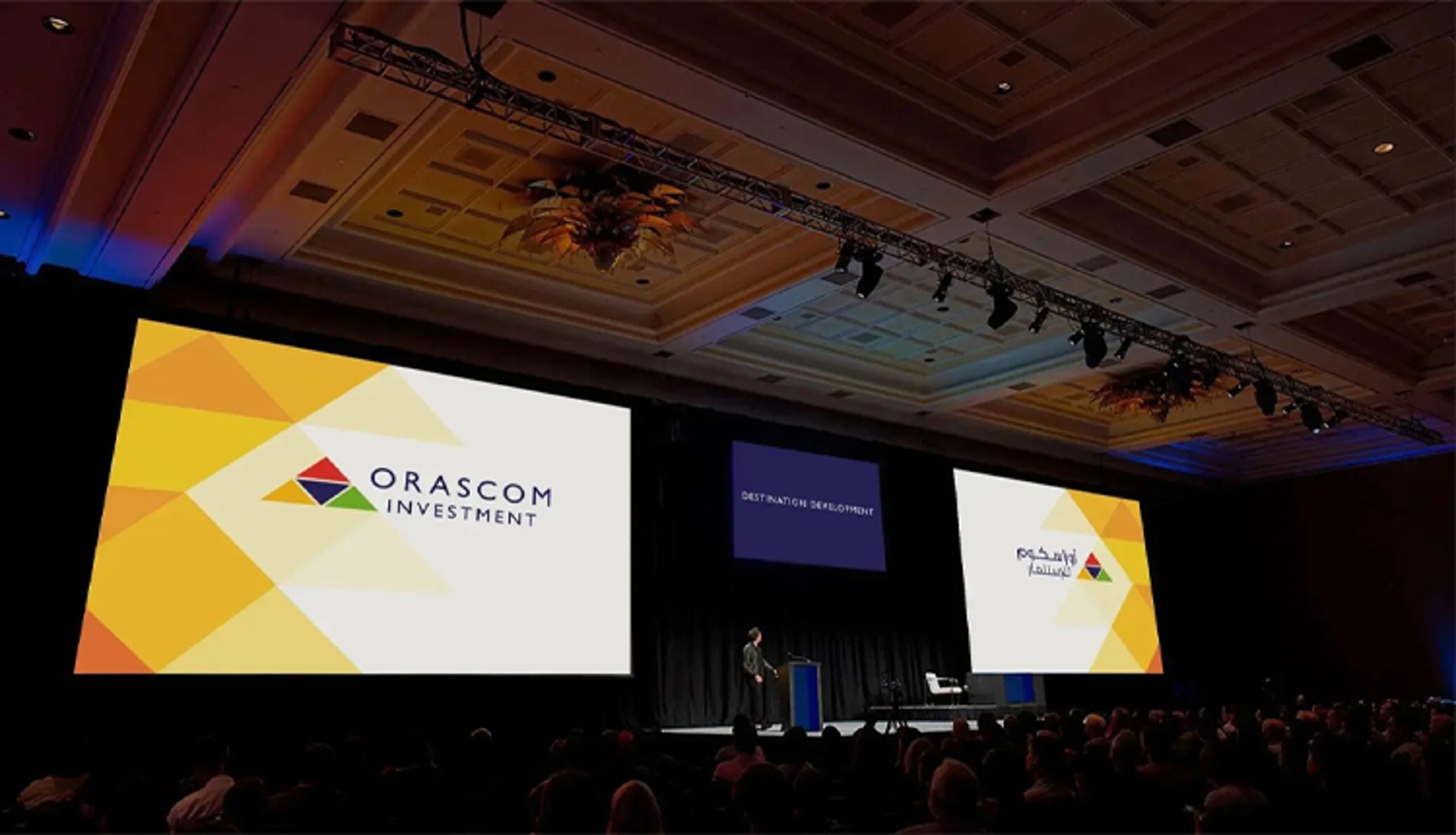
Egypt’s Orascom Investment Holding (OIH) has finalized the sale of its subsidiaries in Brazil for some USD 18 mn, the company said in a statement (pdf) on Monday.
The money is partially going towards green projects: The proceeds from the sale will be directed towards renewable energy projects, in addition to the company’s new investments in touristic destination developments, the statement said. OIH did not specify how much money is being earmarked for the renewable projects, nor did it say which projects will receive financing from the sale’s proceeds.
OIH’s green portfolio is on the rise: OIH’s board of directors approved investments in EVs in April and signed a strategic partnership agreement with BluEV in May through which the two companies will convert two and three-wheeled vehicles to electric models. It also announced in May exploring investments in Uzbekistan’s renewables and the hospitality sector, as part of a USD 1.2 bn investment.
M&A WATCH
Arcapita exits Waste Harmonics
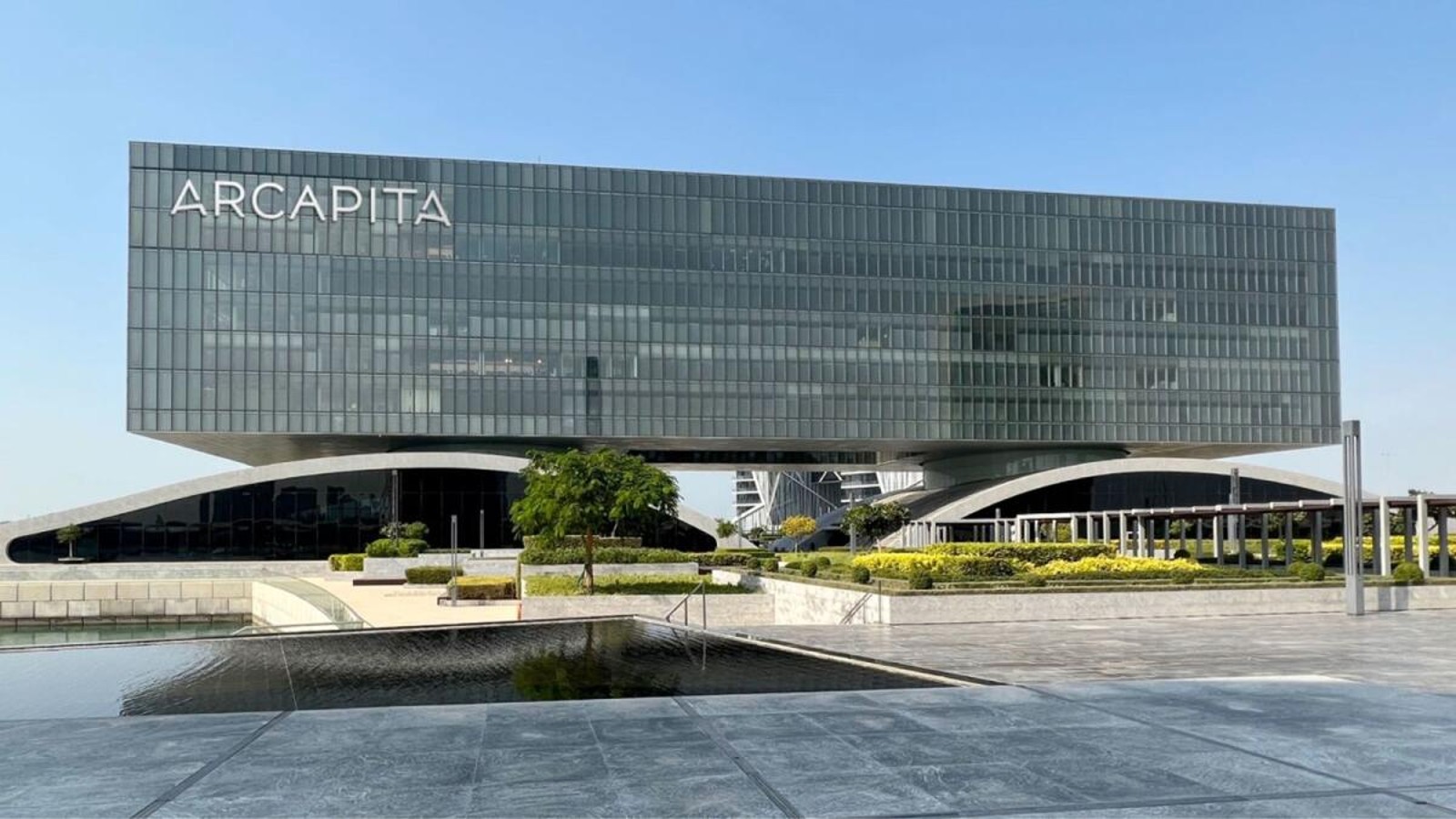
Bahrain’s Arcapita sells Waste Harmonics to TPG-backed firm Keter Environmental Services: Bahrain-based alternative asset manager and private equity firm Arcapita Group has exited Waste Harmonics, a US-based tech-enhanced waste management firm, after a three-and-a-half year ownership period, Arcapita said in a statement on Monday. The statement did not disclose the value of the transaction.
The acquiring company: Arcapita sold Waste Harmonics to US-based Keter Environmental Services, a recycling and waste management company. TPG Growth had acquired Keter in 2021. Waste Harmonics had previously signaled a potential merger with Keter in June, whereby Arcapita would eventually sell its stake in Waste Harmonics to TPG.
What Keter gets out of it: The acquisition will see Keter “benefit from evolving customer preferences, including the centralization of procurement, focus on service quality, and increased waste stream complexity,” the statement reads. Under Arcapita’s ownership, Waste Harmonics’ annual returns rose fourfold to USD 400 mn, according to the statement.
ALSO ON OUR RADAR

A bid for net-zero SMEs: The COP28 Presidency has partnered with the SME Climate Hub and We Mean Business Coalition to help small and medium sized enterprises (SMEs) in the region put net-zero strategies into action, Wam reports. The collaboration is designed to allow startups with under 500 employees to make globally recognized climate pledges and join the UN-backed Race to Zero Campaign. It will also make tools and resources accessible at no charge for businesses implementing net zero strategies by 2050 or before. The dedicated program comes in partnership with UAE’s Masdar with backing from First Abu Dhabi Bank and the Abu Dhabi Chamber.
OTHER STORIES WORTH KNOWING ABOUT THIS MORNING-
- A bid for concrete waste recycling in the UAE: Cement maker Cemex UAE has signed a cooperation agreement with Indian UltraTech Cement’s wholly owned subsidiary Star Cement to recycle concrete waste in the construction industry and cut carbon emissions. (Gulf News)
- A step forward for solar in Iraq: Iraq will allocate IQD 90 bn (c. USD 68.3 mn) to install solar panel systems on 500 governmental buildings starting early 2024. (Al Sabah Newspaper, pdf)
- Qatar is getting smart water network infrastructure: The Qatar General Electricity and Water Corporation (Kahramaa) has signed a partnership agreement with telecom firm Ooredoo to set up advanced water network infrastructure with investments totalling QR 75.5 mn (c. USD 20.7 mn) over a span of 10 years. (QNA)
- CBD eyes carbon neutrality by 2030: The Commercial Bank of Dubai (CBD) plans to achieve carbon-neutral operations and lower carbon emissions from its own operations by 50% by 2030. (Statement)
- Tunisia needs TND 550 mn to implement its 2018-2030 Disaster Risk Reduction to safeguard against disasters and put in place an early warning system (Tap).
AROUND THE WORLD
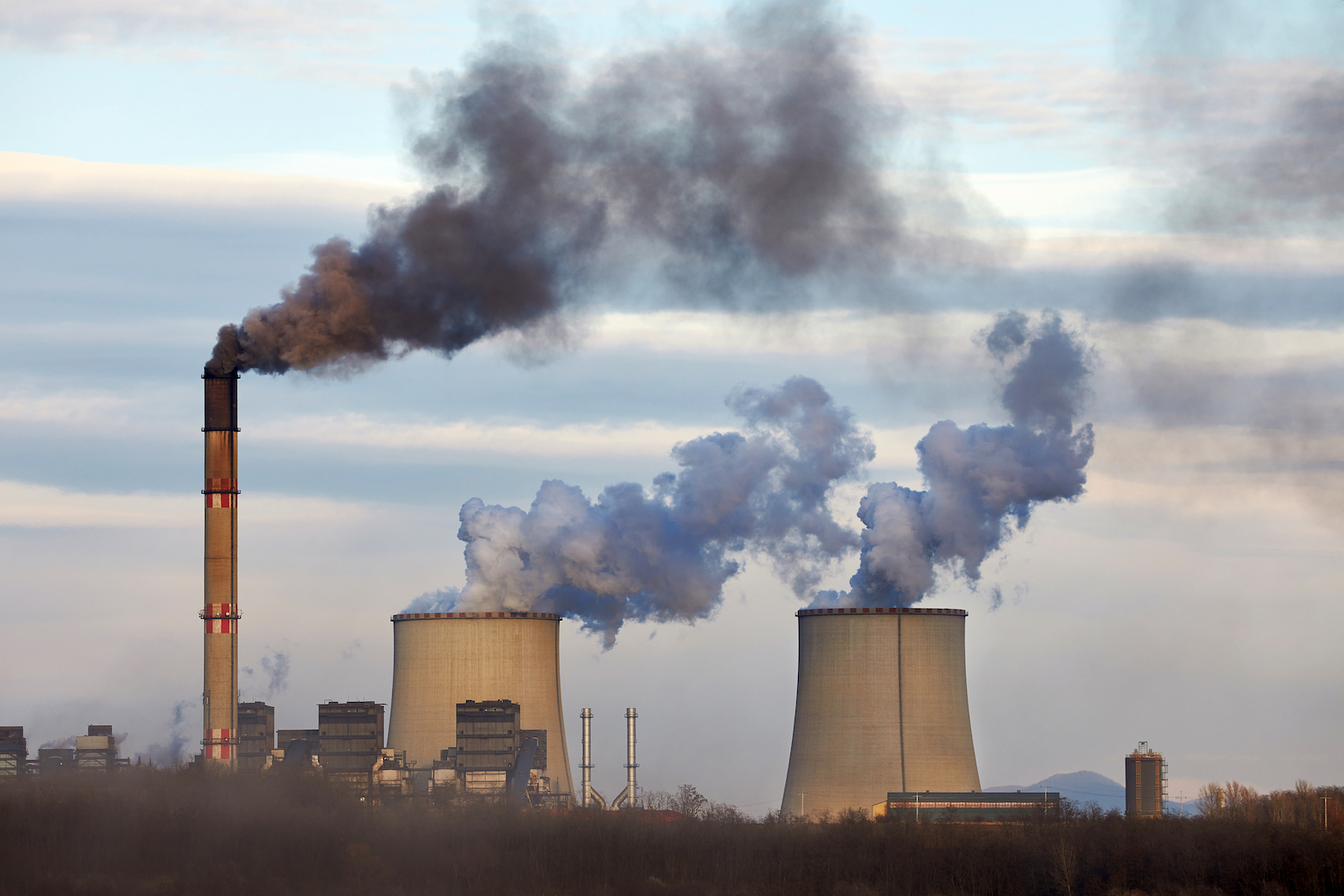
Ireland shows it's not all talk on fossil-fuel phase out: In one of the boldest climate action moves yet, Ireland has rejected the establishment of a new fossil fuel import facility due to climate concerns, Bloomberg reported. After taking into consideration policies outlined in Ireland’s energy and climate action plan, the country’s planning authority refused a proposal for an LNG import terminal on the Shannon Estuary and a related gas-fired power plant, according to the business information service. Ireland is “probably the first” country to deny an LNG facility based “on climate, as opposed to local environmental opposition,” research fellow at the Oxford Institute for Energy Studies Jonathan Stern told Bloomberg.
The world should take note: Despite almost all the world’s countries having signed climate pledges under the 2015 Paris Agreement, the majority continue to expand investments in oil and gas. Germany, for example, has been ramping up its natural gas investments, citing energy security concerns amid sanctions on Russia. The UAE’s Adnoc has a USD 150 bn investment plan to enable an “accelerated growth strategy” for oil and gas production. Saudi Aramco is planning an estimated USD 10 bn second expansion phase of its Jafurah unconventional gas production project.
OTHER STORIES WORTH KNOWING ABOUT THIS MORNING-
- Pakistan is getting a new carbon fund: Pakistan’s Climate Change Ministry plans to introduce a carbon fund and a comprehensive carbon policy, Energy Minister Muhammed Ali said at the Adipec conference this week. The policy involves improved data availability, upping the supply of natural gas, and investing more into power transmission. (Wam)
- Brookfield acquires Banks Group’s green unit for USD 1 bn: Brookfield, a Canadian investment firm, has purchased the renewable energy branch of UK-based Banks Group for USD 1 bn. (Reuters)
CLIMATE IN THE NEWS
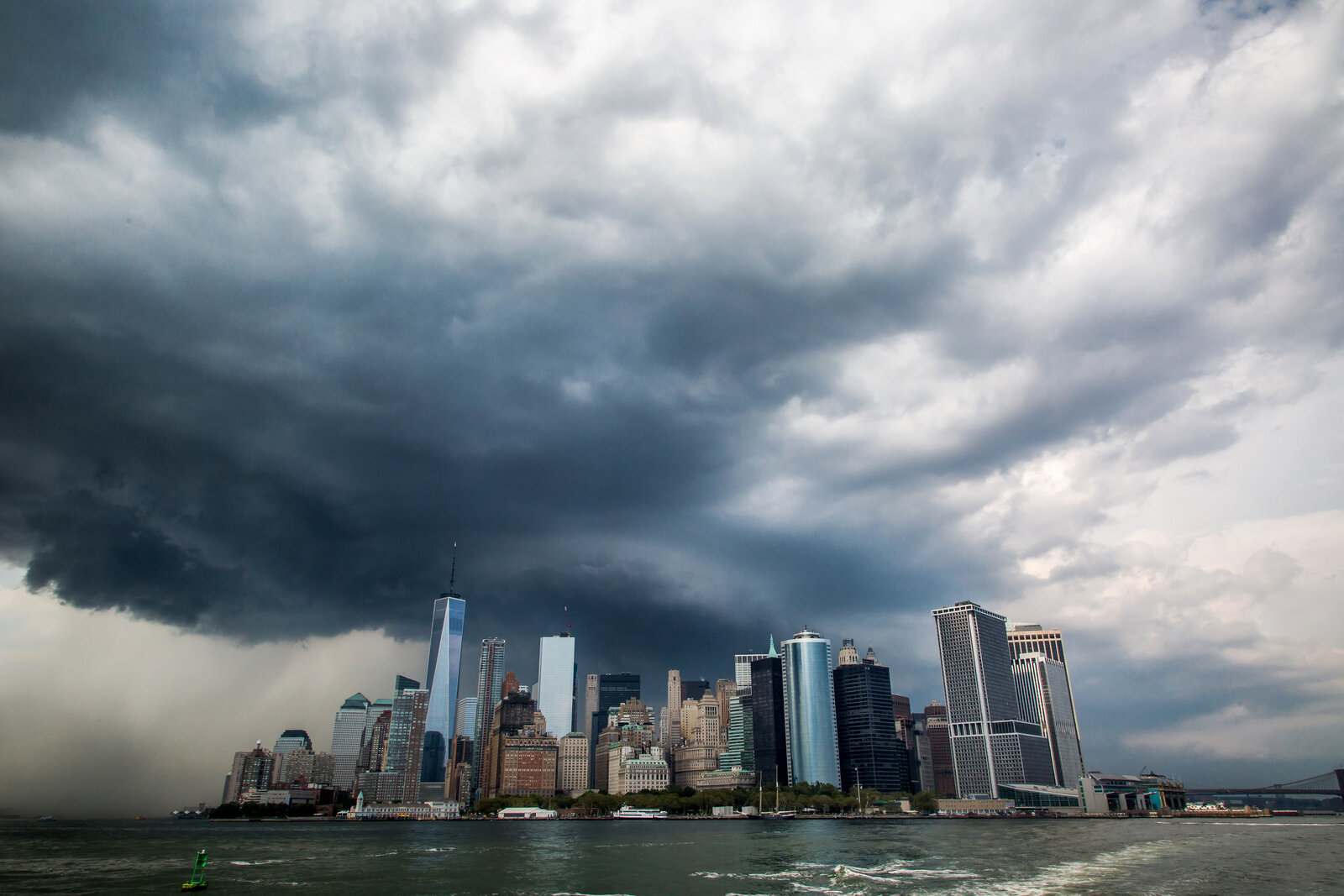
New York City storm was 20% wetter than usual due to climate change: New York City was drenched in a month’s worth of rain in a single day on Friday, The Guardian reports. A study by scientists at Climameter found that the storm that hit New York over the weekend was 10-20% wetter than it would have been if it weren’t for climate change.
This was expected: The extreme event that hit New York “aligns with climate change projections,” reads the report, citing Italy’s Istituto Nazionale di Geofisica e Vulcanologia's researcher Tommaso Alberti. “Human-driven climate change plays a dual role, both intensifying these storms and warming the atmosphere,” said Davide Faranda, a scientist at the Institut Pierre-Simon Laplace in France. “Deeper storms yield more intense phenomena, while a warmer atmosphere can accommodate a greater amount of rain,” he added. The US has recently been facing weather extremes fuelled by global heating, from long droughts to disastrous flooding, The Guardian reports.
Where are climate startups most essential? BloombergNEF earmarks three areas as it makes a call for applicants to its annual Pioneers award. The first: in clean power grids, where software startups must step in to help governments steady the flow of an increasing volume of renewable power to national grids. The second: In the building sector, where decarbonizing the production of materials like steel, concrete, and timber will rely on ideas by enterprising startups. The third: In the green fuel sector, where synthetic and alternative fuels must be innovated to help states meet targets in the pivot away from fossil fuels.
ON YOUR WAY OUT
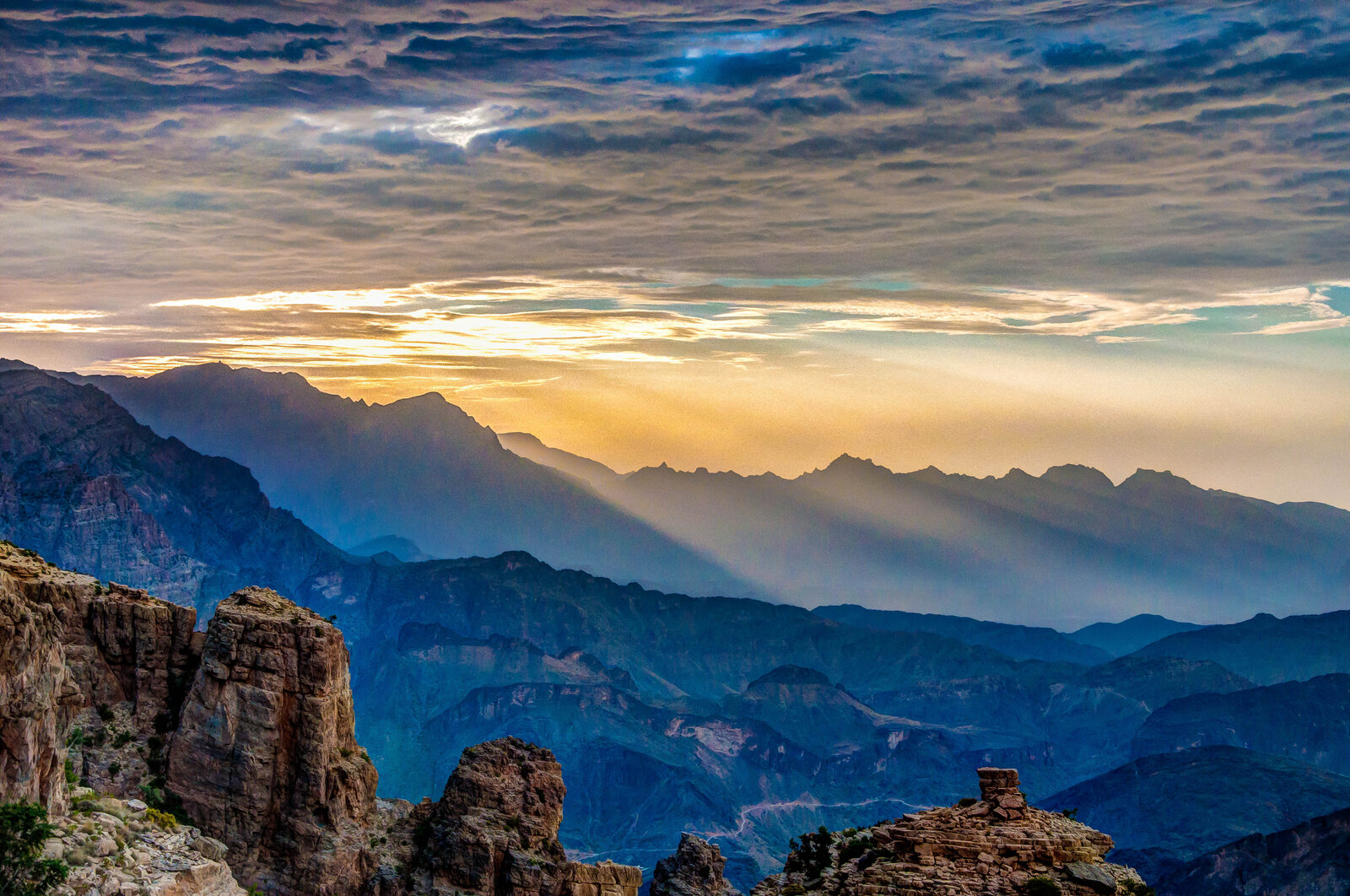
Seeding the oceans with minerals to capture carbon is a rising star among efforts to mitigate the effects of climate change, Bloomberg reports. Vesta, a firm engaged in coastal carbon capture, sees the UAE and the Middle East as fertile ground for capturing CO2 cheaply and on a large scale. “What we’re looking for is locations which have large amounts of the mineral and the right oceanographic conditions. When you look at the Middle East, you have both,” said Vesta CEO Tom Green.
What is coastal carbon capture? Coastal carbon capture, aka enhanced weathering or ocean fertilization, involves depositing basic silicate rocks such as olivine-rich dunite in coastal areas, which releases chemicals that raise seawater alkalinity, increasing CO2 capture from the atmosphere.
What makes it so special? The major challenges for various carbon capture and sequestration/utilization techniques are cost and energy use. The cost of carbon capture varies from USD 15-25/t CO2 to USD 40-120/t CO2 depending on whether the CO2 source is a high- or low-concentration, according to the International Energy Agency (IEA). Vesta claims their technique needs as little as USD 21 and 40 KW/h of energy to remove one ton of CO2 from the atmosphere.
But wait — it also has its limitations, including the length of time it takes the minerals to contribute to carbon sequestration. The process of olivine dissolution has an estimated half-life of 70 years, meaning it’d take around 70 years for the olivine to dissolve and capture CO2 in the process, reads Bloomberg’s report, citing Columbia Climate School’s Lamont-Doherty Earth Observatory professor Peter Kelemen. Yet Vesta is hopeful that warmer waters, wave motion, and how finely the mineral is ground can help reduce this to a 10-20-year half-life. Concerns have also been also voiced about its effect on ecosystems given that it often contains toxic elements and can affect the food chain.
Vesta finds the Persian Gulf a suitable location to deploy its tech owing to the temperature, chemistry, and type of currents of the Gulf’s waters, the report reads. As it takes one ton of olivine to remove one ton of CO2, Vesta is looking to tap into the olivine deposits in the Hajar Mountains along the coast of UAE and Oman to supply the mineral for their operations. Vesta is no stranger to the region with well-established ties to Egypt and possibly Kuwait. The firm aims to gain investment from the UAE, a major proponent of carbon capture technologies.
CALENDAR
OCTOBER 2023
2-5 October (Monday-Thursday): ADIPEC Decarbonization Accelerator, Abu Dhabi, UAE.
4 October (Wednesday): Arabia CSR Gala Awarding Ceremony, UAE.
4-5 October (Wednesday-Thursday): Future Sustainability Forum, Dubai, UAE.
9-10 October (Monday-Tuesday): Saudi Green Building Forum, Riyadh, Saudi Arabia.
10-11 October (Tuesday-Wednesday): Green Energy Africa Summit, Cape Town International Convention Centre 2, Cape Town, South Africa.
8-12 October (Sunday-Thursday): MENA Climate Week, Riyadh, Saudi Arabia.
9-15 October (Monday-Sunday): World Bank/IMF 2023 Annual Meetings, Marrakech, Morocco.
10-12 October (Tuesday-Thursday): Autonomous E-Mobility Forum, Doha, Qatar.
16-17 October (Monday-Tuesday): Duqm Economic Forum, Duqm, Oman.
16-18 October (Monday-Wednesday): Climate Week, Rome, Italy.
16-20 October (Monday-Friday): UNCTAD World Investment Forum, Abu Dhabi, UAE.
18-20 October (Wednesday-Friday): Morocco and Belgium business meeting on green hydrogen, Tangiers, Morocco.
17-18 October (Tuesday- Wednesday): Critical Minerals Africa Summit, Cape Town, South Africa.
17-19 October (Tuesday-Thursday): Energy Intelligence Forum, London, UK.
17-20 October (Tuesday-Friday): Fourth meeting of the COP27 Transitional Committee, Aswan, Egypt.
25-26 October (Friday-Saturday): Offshore & Floating Wind Europe 2023, London, United Kingdom.
29 October-2 November (Sunday-Thursday): Cairo Water Week, Cairo, Egypt
30 October – 1 November (Monday-Wednesday) ISWA 2023 World Congress: Global action towards a net-zero future, Muscat, Oman.
31 October-2 November (Tuesday-Thursday): Financial Times’ Energy Transition Summit, London, UK.
31 October-2 November (Tuesday-Thursday): World Hydropower Congress, Bali, Indonesia.
NOVEMBER 2023
1-3 November (Wednesday-Friday): Forbes Middle East Sustainability Leaders Summit 2023, Abu Dhabi, UAE.
7-8 November (Tuesday-Wednesday): ADIA Lab Symposium on Climate Change and Health Sciences, Abu Dhabi, UAE.
7-8 November (Tuesday-Wednesday): The 2023 US Algeria Energy Forum, Washington DC, USA.
9-10 November (Thursday-Friday): International Renewable Energy Agency Investment Forum, Uruguay.
9-15 November (Thursday-Wednesday): Intra-African Trade Fair 2023, Cairo, Egypt.
11-13 November (Saturday-Monday): GCC-Türkiye Economic Forum, Istanbul, Turkey.
15-17 November (Wednesday-Friday): WETEX and Dubai Solar Show, Dubai, UAE.
15-18 November (Wednesday-Saturday): DEWA’s First MENA Solar Conference, Dubai, UAE.
20-24 November (Monday-Friday) International Civil Aviation Organisation’s Aviation and Alternative Fuels conference, Dubai, UAE.
27-30 November (Monday-Thursday) Abu Dhabi Finance Week (ADFW), Abu Dhabi, UAE.
28-29 November (Tuesday-Wednesday): World Green Economy Summit (WGES), Dubai, UAE.
30 November – 12 December (Thursday-Tuesday): Conference of the Parties (COP 28), Dubai, UAE.
DECEMBER 2023
4 December (Monday): Saudi Green Initiative Forum, Dubai, UAE.
4 December (Monday): Abu Dhabi Sustainability Week (ADSW) summit, Dubai, UAE.
8 December (Friday): Youth for Sustainability Forum (Y4S), Dubai, UAE.
12-14 December (Tuesday-Thursday): Green Hydrogen Summit Oman, Oman Convention and Exhibition Center, Muscat, Oman.
18-20 December (Monday-Wednesday): Saudi Arabia Smart Grid Conference, Hilton Riyadh Hotel & Residences, Riyadh, Saudi Arabia.
JANUARY 2024
9-11 January (Tuesday-Thursday): Future Minerals Forum, Riyadh, Saudi Arabia.
FEBRUARY 2024
26-28 February (Monday-Wednesday): Management and Sustainability of Water Resources, Dubai, UAE.
MARCH 2024
4-6 March (Monday-Wednesday): International Conference on Sand and Dust Storms in the Arabian Peninsula, Riyadh, Saudi Arabia.
APRIL 2024
16-18 April (Tuesday-Thursday): World Future Energy Summit, Abu Dhabi, UAE.
23-25 April (Tuesday-Thursday): Connecting Green Hydrogen MENA, Dubai, UAE.
MAY 2024
19-21 May (Sunday-Tuesday): Saudi Energy Convention, Riyadh, KSA.
JUNE 2024
5 June (Wednesday): World Environment Day, Saudi Arabia.
DECEMBER 2024
2-13 December (Monday-Friday): Conference of the Parties (COP16) to the United Nation Convention to Combat Desertification, Riyadh, KSA.
EVENTS WITH NO SET DATE
2023
Mid-2023: Oman set to sign contracts for green hydrogen projects.
Mid-2023: Sale of Sembcorp Energy India Limited to consortium of Omani investors to close.
Phase C of the 900-MW of the Mohammed bin Rashid Al Maktoum Solar Park in Dubai to be completed.
Saudi Basic Industries Corporation (Sabic) steam cracker furnace powered by renewable energy to come online.
2024
12-14 February (Monday-Wednesday): Sustainable Aviation Futures MENA Congress, Dubai, UAE.
End-2024: Emirati Masdar’s 500 MW wind farm in Uzbekistan to begin commercial operations.
QatarEnergy’s industrial cities solar power project will start electricity production.
2025
International Union for Conservation of Nature World Conservation Congress, Abu Dhabi, UAE.
UAE to have over 1k EV charging stations installed.
2026
UITP Global Public Transport Summit, Dubai, UAE.
1Q 2026: QatarEnergy’s USD 1 bn blue ammonia plant to be completed.
End-2026: HSBC Bahrain to eliminate single-use PVC plastic cards.
2027
MENA’s district cooling market is expected to reach USD 15 bn.
2030
UAE’s Abu Dhabi Commercial Bank (ADCB) wants to provide AED 35 bn in green financing.
UAE targets 14 GW in clean energy capacity.
Tunisia targets 30% of renewables in its energy mix.
Qatar wants to generate USD 17 bn from its circular economy, creating 9k-19k jobs.
Morocco’s Xlinks solar and wind energy project to generate 10.5 GW of energy.
2035
Qatar to capture up to 11 mn tons of CO2 annually.
2045
Qatar’s Public Works Authority’s (Ashghal) USD 1.5 bn sewage treatment facility to reach 600k cm/d capacity.
2050
Tunisia’s carbon neutrality target.
2060
Nigeria aims to achieve its net-zero emissions target.
Enterprise Climate is available without charge thanks to the generous support of HSBC (tax ID: 204-901-715), the leading corporate and retail lender in Egypt; and Infinity Power (tax ID: 305-170-682), the leading generator and distributor of renewable energy in Africa and the Middle East. Enterprise Climate is delivered Mon-Thurs before 4 am UAE time. Were you forwarded this copy? Sign up for your own delivery at climate.enterprise.press. Contact us on climate@enterprisemea.com.


